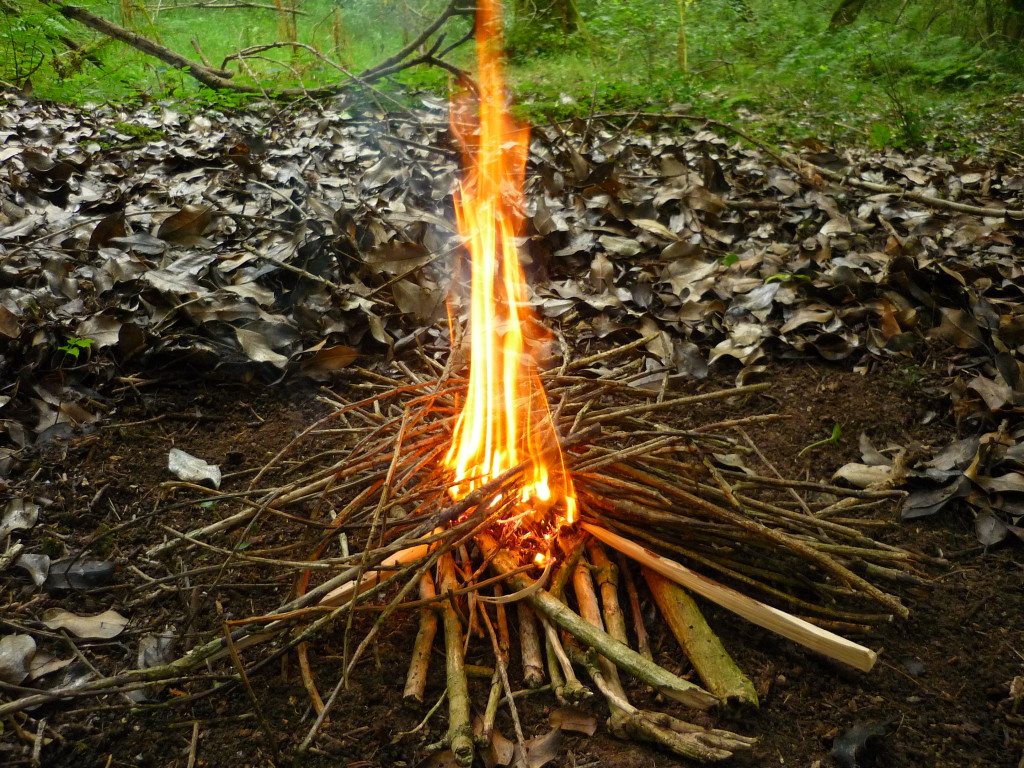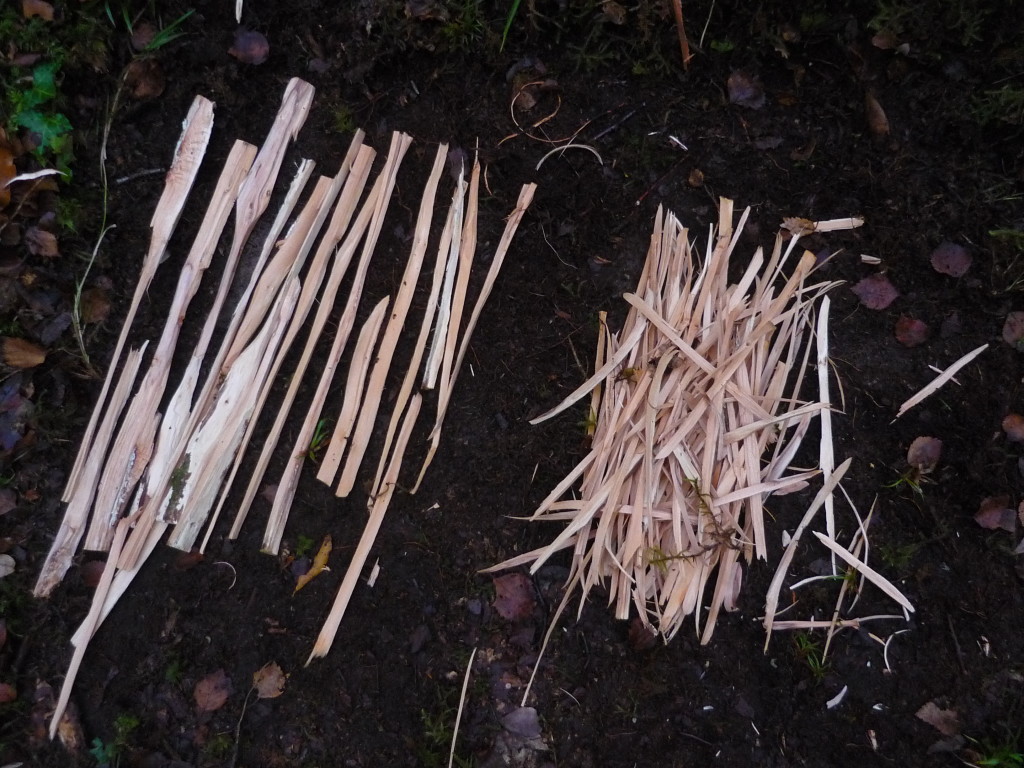7 BUSHCRAFT USES OF SYCAMORE:
.
1. CARVING
“Sycamore timber, when polished, is one of the most beautiful woods, lustrous and silky”
There is something exceptional about sycamore wood. Generally underrated and often overlooked, the strong timber of sycamore has a subtle sheen and smoothness that makes it a very attractive choice of wood-carving.
The carved wood retains a good, hard-wearing edge that is not prone to brittleness.
Of course, when it comes to carving projects, it really doesn't matter how pretty the wood is. Still, when carving with attractive wood there can be an extra incentive in making a well-made, finished article. Making that extra effort will deepen your knowledge of the wood you are carving - as getting to know the properties of different timbers is a key bushcraft skill.
Such information is very relevant to the bushcrafter in his or her quest in acquiring an intimate and practical knowledge of the woods. It’s time well spent.
Bottom line: if you have the good opportunity to use sycamore wood for a carving project - go for it..
2. BOW-DRILL
When it comes to the friction fire method of bow-drilling, the dead wood of sycamore timber fits the bill just nicely. Despite being a non-native, the sycamore is widely distributed and often locally common so investing time in getting to know the sycamore is worth the effort.
More often than not - dry, well-seasoned sycamore wood is of an optimal density and dryness for bow-drilling. In Ireland, there are not that many widely distributed, relatively common, bow-drill tree species - all the more reason in becoming very familiar with sycamore..
3. FUEL
More than passable as fuel, sycamore wood produces a hot flame with good embers. Although the flames and embers of sycamore aren’t as hot or as enduring as, for example, the denser wood of oak, Quercus spp., and ash, Fraxinus excelsior, what is advantageous about sycamore trees is that they produce a lot of easily obtainable and sizable, dead branches that are portable - which is not always the case with other tree species.
In addition sycamore logs split well and the wood can be easily cut with a outdoor saw.
4. KINDLING
Dead Branches: Large and medium-sized sycamore trees seem to produce a high proportion of dead branches.
Dead Basal Shoots: At the base of many sycamore trunks there are many straight, dead and living basal shoots. Thin, dry and long – the dead basal shoots make excellent kindling and are especially useful for the fire-lay of the small twig fire.
Suspended Dead Twigs: Entangled amongst sycamore branches there is also an abundance of dead, thin sycamore twigs. Not all twigs are the same when it comes to kindling. For example, the dead twigs of rowan, Sorbus aucuparia, generally make poor kindling due to the high moisture content. Sycamore twigs, however, make excellent kindling. When making a campfire in a broadleaf wood where sycamore trees are dominant it would be prudent to preferentially select sycamore twigs for kindling.
5. FEATHER STICKS - SPLINTS - EXTERIOR WOOD SHAVINGS
Feather Sticks: Sycamore wood can be easily carved and can, sometimes, be carved into feather sticks. However, this can prove problematic as many dead sycamore limbs branch a lot, with the result that sourcing multiple, 1-foot lengths of knot-free, dead sycamore wood a somewhat difficult task. There are alternative solutions – branchy sycamore limbs can be carved into shorter-length feather sticks, although quite a few more of them have to be made (approx. 4-8) to make a sizeable mass of dry, wood curls for damp-weather, fire-lighting.

Using two sycamore feather-sticks to ignite holly (Ilex aquifolium) twigs. The sycamore feather-sticks preformed well (photo: Sean Fagan)
Splints: Dead sycamore wood can be split into many fine splints (very thin lengths of wood) which can be, with proper technique, ignited with a naked flame (e.g. match or lighter). Try to make the splints as long and as thin as possible to facilitate ignition and always make plenty of them (usually more than you think you need, especially during inclement weather). Splints are much easier to make than feather sticks which is worth remembering if you are having difficulty making feather sticks but can make good splints.

Experimenting with splints from a sycamore branch that was unsuitable (too branchy) for feather-sticks. A fire was obtained (photo: Sean Fagan).
Carving Wood from the Exteriour: Another solution is to carve curls off the trunk of a dead, standing tree or large branch. One of the golden rules for making feather sticks is that the curls are carved from the centre-most section of dead limbs, where the wood is driest.
However, it’s possible to obtain dry curls from the exterior of a dead, standing sycamore tree or a largish, fallen sycamore branch. Firstly, de-bark the wood and then shave curls off the dead wood. Its challenging but possible provided the wood is completely dry under the bark..
6. TAPPING
Tree tapping is the practise (usually in spring) of causing an open wound in a tree trunk for the purpose of collecting the watery sap for consumption. Done carefully, there is no lasting damage to the tree.
The sap is usually collected in a receptacle (e.g. Billy can).
Many tree species produces sap with specific qualities and taste. Some can be mildly saccharine (containing sugar), some sap is believed to have medicinal, health-giving properties (e.g. birch sap) while most edible tree sap is nutritious.
As already stated, sycamore belongs to a family of trees that are commonly known as maples. Quite a few maple tree species can be tapped. For example, sugar maple, Acer saccharum, and black maple, Acer nigrum, were traditionally tapped in North America by the first nation people and subsequently, the European colonists.
Like all trees that can be tapped, sycamore is best tapped in the springtime when there is a copious upward flow of nutritious sap from the roots to the leaves.
Be considerate when tapping. Tapping requires an open, trunk wound when the tree is copiously flowing with sap. Many disease-causing bacteria and fungi will readily infect the sap of an open tree wound and can, potentially, cause serious damage to the tree.
Make sure to seal off a tapping hole when finished so as to miminise risk of infection and staunch excessive weeping of sap. During springtime a trunk wound can weep for days, even longer, before naturally sealing over.
Sycamore can produce quite a lot of sap, which has a faint hint of sweetness. I personally find sycamore sap refreshing and restorative, especially after a day’s exertion during the cool days of spring..
7. CONSTRUCTION MATERIAL
The strong wood of sycamore is moderately elastic and can be shaped into bushcraft projects that require bending. Dome shelters, baskets and spring traps are three such possibilities. To be honest though there are far more flexible trees than sycamore such as willow and hazel, but if sycamore branches is all that is available it can be fashioned, albeit with care, into bushcraft projects that require bending.
The many sturdy side branches of sycamore limbs make excellent hooks for pot suspension and hangers for bushcraft items such as a rucksack, clothes, axe etc.

Recent Comments